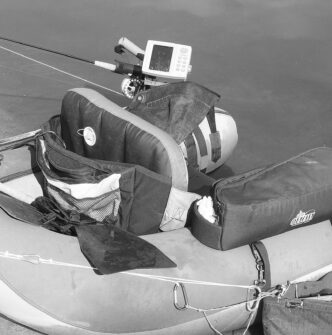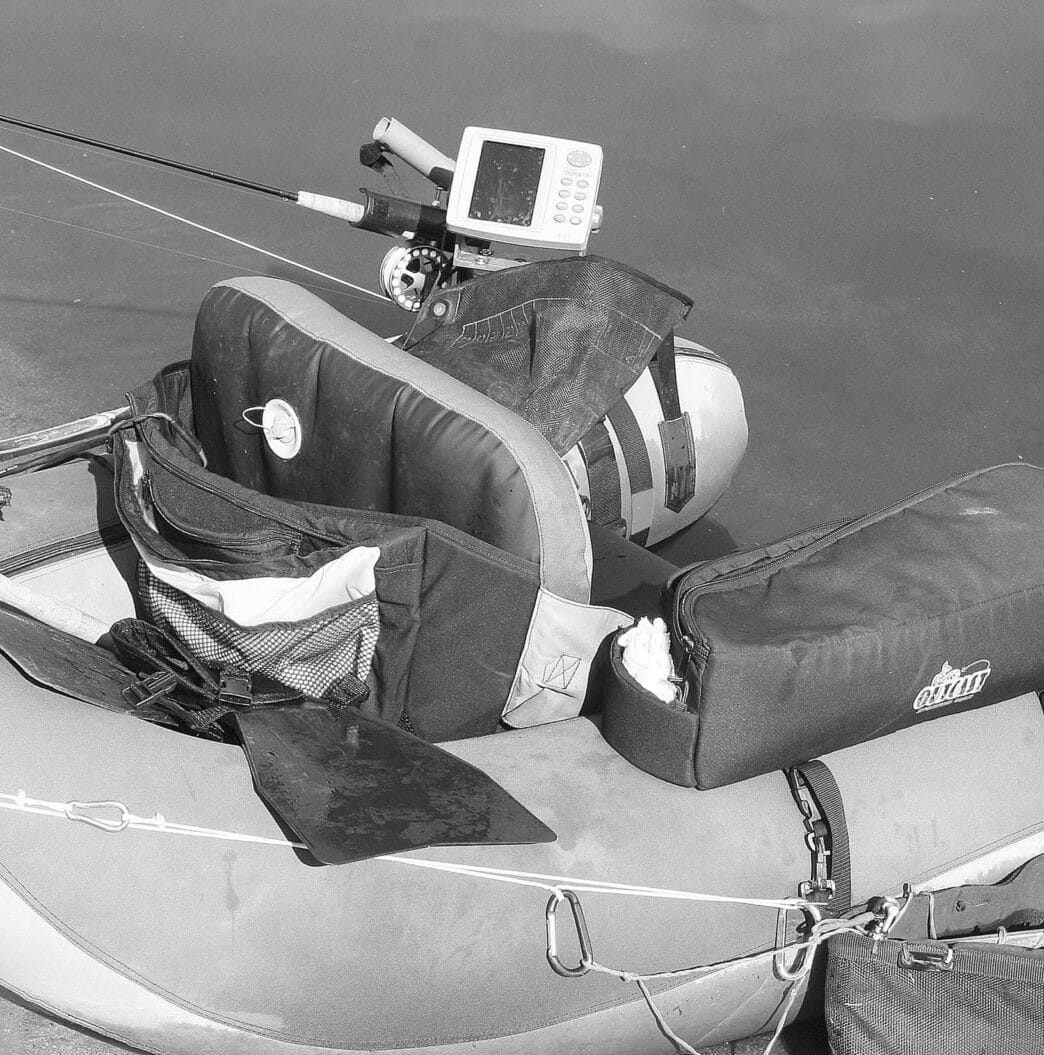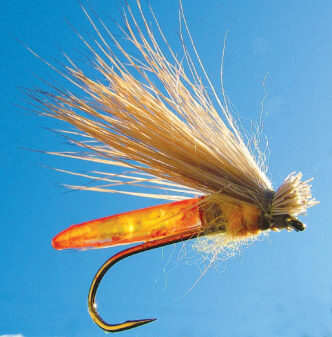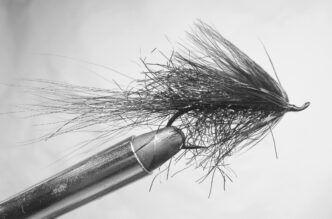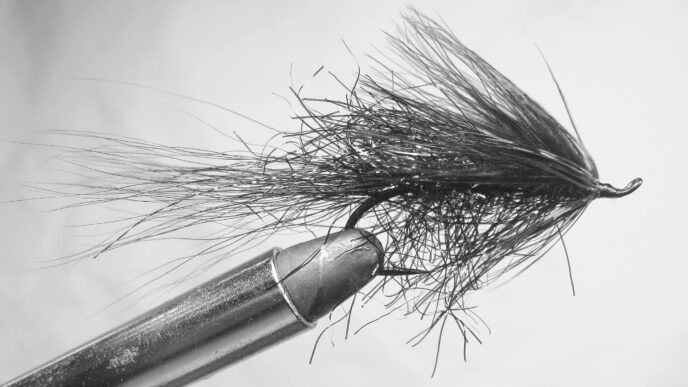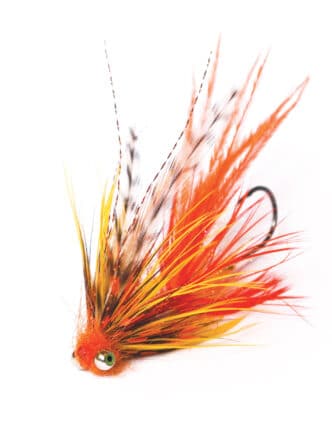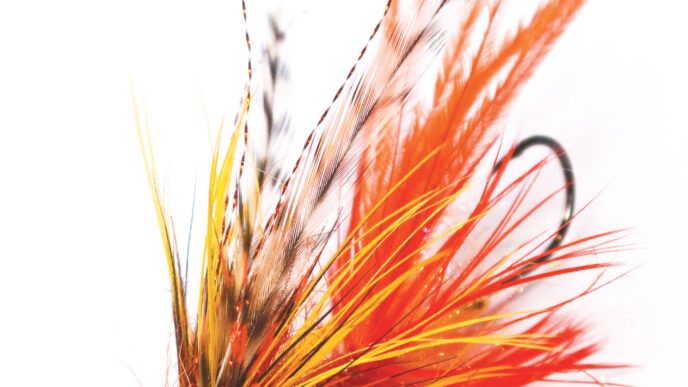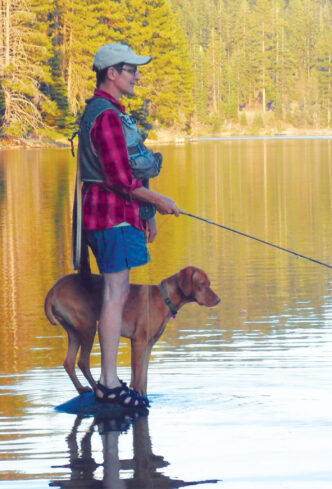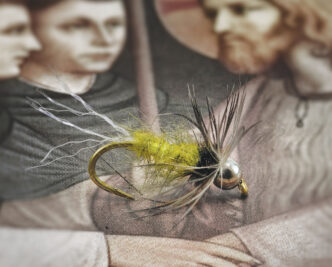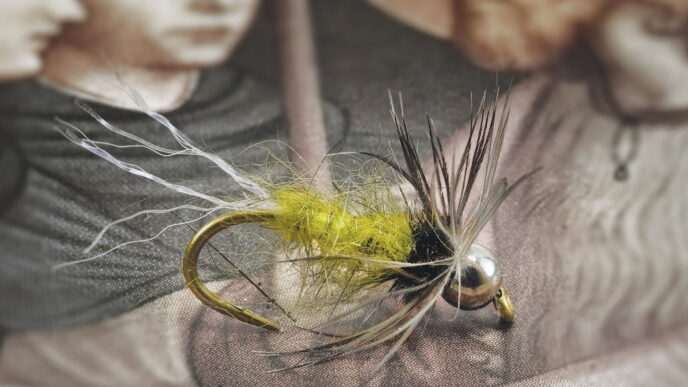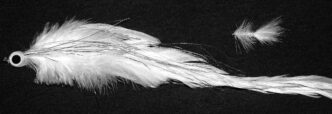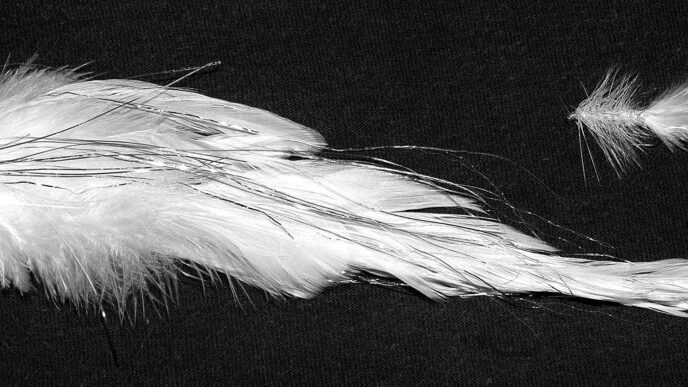Although it’s winter as you read these words, spring, and the angling opportunities it brings, is not far away. You’ve probably already gone through your tackle at least once, cleaning fly lines, checking the drags on your fly reels, and spending several evenings at the fly-tying bench, putting the finishing touches on the flies you’ll be fishing later in the year — maybe even venturing out to a local lake for a bit of midwinter trout angling.
I had a friend tell me years ago that he never got out his bass gear until he saw squirrels foraging for food on the ground around his favorite lake. It’s a nice idea, but if you wait that long to string up your fly rod with a bass-bug taper, you are missing some quality fishing time.
We all know about how bass and panfish go through their spring spawning rituals. Generations of fly anglers (and conventional-tackle fishermen, as well) have learned that when a lake’s water temperatures rise into the low 60s, bass and their cousins move into shallow water to create nesting areas and then lay and fertilize eggs to produce future generations of bass and panfish.
That’s a great time for the fly angler. Spawning bass and bluegills are pugnacious in defending their nests and will hit almost anything you toss at them while they are guarding the beds. Not only that, you stand a good chance of getting one of the big bass, almost exclusively female, to hit a fly.
There’s something else, however, that needs to be said about this time of year. If you wait until the spawn is underway, you’ve missed some of the most interesting fishing of the spring. I am, of course, referring to the prespawn period, when the bass have moved up out of their winter hideouts and are staging at spots that lead into shallow spawning areas.
This prespawn migration begins in earnest when water temperatures warm above the mid-50-degree range. You’ve probably read that largemouth bass prefer temperatures in the high 60s or the low 70s. You can forget that. Bass don’t really have a “preferred temperature” — they just live in the water temperatures available to them. In Southern California, where I fish, bass usually go on the spawn in late February, when the period of sunlight lengthens and water temperatures moderate into the low 60-degree range, but, more interestingly, they stage in deeper water adjacent to their spawning areas when water temperatures are in the middle 50s.
What this means is that you can get started fly fishing for bass earlier than you might expect. In lakes with wind-protected coves that combine spawning flats with deeper stream channels or drop-offs, you may find bass shallow enough to be reached with flies fished on a sink-tip or sinking line as early as the first week or two of February. Note, however, that there are no hard-and-fast rules about temperature. You have to start fishing and keep fishing until the right condi-tions occur on a day when you are on the water.
I’ve written in previous columns about a day spent at Big Bear Lake in the San Bernardino Mountains. Big Bear is a reservoir built so long ago that most people think of it as a natural lake, even though they know it has a dam stretching across a narrow canyon that holds the water back.
One day in early February, I received a call from a friend who doesn’t fly fish. He wanted me to join him on a trip to Big Bear, saying the bass bite was wide open. I questioned that claim, given the season, but decided to go anyway. We launched his bass boat at one of the marinas, which, although closed to the public, let us use their ramp. The first temperatures we got from the depth finder showed 46 to 47 degrees — not anywhere close to anything like a “preferred bass temperature.”
While I was still fooling around with choosing a line-and-fly combination that I thought would work, my buddy quickly caught and released three bass from the riprap along the boat channel inside the marina — fish of two to three pounds. When I recovered from my surprise, he grinned, moved the boat up against the rocks, and showed me a temperature of between 48 and 49 degrees. We motored outside the marina and slid into a cove where the summer docks had been moored over the winter. They would be moved back to the marina in April. Casting to these docks, we both began to hook fish.
The angling was pretty darn good for February, and we caught bass as large as four to five pounds. Most of them came out from under the docks, which were in water about 15 feet deep. It was exactly the same as at the riprap: the docks were getting the benefit of the longer sunlit days, and the heat they were putting into the water raised the temperature nearby from 46 degrees to the same 48 to 49 degrees as at those rocks. That small increase in temperature brought bass from their deep-water winter holding areas to bask in the relative warmth.
We landed fish fairly consistently until the wind came up and started pulling heat from the docks and floats. As soon as water temperature dropped back into the 46-degree range, the bite was over. This was a special situation, and I don’t expect you to be able to experience it very often, but it does illustrate what happens on many bass lakes in the weeks before you start angling for spawning fish.



